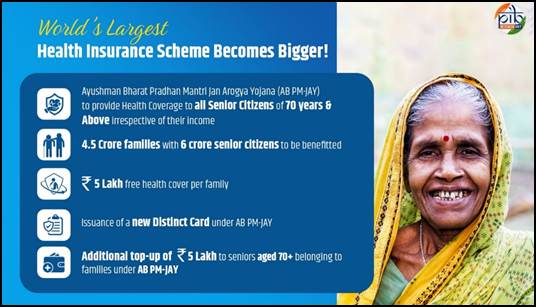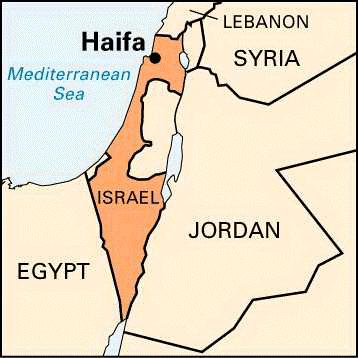- Home
- Prelims
- Mains
- Current Affairs
- Study Materials
- Test Series
September 24, 2024 Current Affairs
CURTAIN RAISER NAVIKA SAGAR PARIKRAMA II
- Mission: Second edition of Navika Sagar Parikrama, a circumnavigation of the globe.
- Vessel: Indian Naval Sailing Vessel Tarini.
- Crew: Two women officers, Lt Cdr Dilna K and Lt Cdr Roopa A.
- Mentorship: Guided by Golden Globe Race hero, Cdr Abhilash Tomy (Retd.).
- Logo Significance: The octagonal shape in the center depicts the Indian Navy, while the sun signifies a celestial body and the compass, guiding the sailors through the challenging seas.
- Mission Goals:To promote seamanship, maritime heritage, and gender equality through a challenging circumnavigation of the globe.

Significance of Navika Sagar Parikrama II
- Empowerment of Women: Highlights women''s capabilities in challenging roles, promoting Nari Shakti and inspiring future generations.
- National Pride: Reinforces India''s maritime heritage and showcases the Navy''s capabilities, enhancing national pride and strategic ambitions.
- Self-Reliance: Aligns with the Atmanirbhar Bharat initiative by demonstrating India''s ability to conduct independent maritime operations.
- Human Endurance: Challenges the limits of physical and mental resilience, raising awareness about maritime risks and the need for preparation.
- International Cooperation: Involves coordination with global maritime agencies, fostering diplomatic relations and enhancing maritime safety.
- Inspiration for Future Expeditions: Encourages further exploration and participation in maritime activities among youth.
- Scientific Awareness: Offers opportunities for marine research and promotes sustainable practices through reliance on wind power.
Historical Context
- Inaugural Expedition: The first Navika Sagar Parikrama was completed in 2017 by an all-women crew of six officers.
- Previous Circumnavigations: Capt Dilip Donde (Retd.) was the first Indian to circumnavigate the globe (2009-10), and Cdr Abhilash Tomy (Retd.) completed the Golden Globe Race in 2022.
Transforming Healthcare: Six Years of Ayushman Bharat PM-JAY
- Launch Date: September 23, 2018, by Prime Minister Narendra Modi.
- Objective: To achieve Universal Health Coverage (UHC) by providing health insurance to the underprivileged.
- Target Population: Aimed at over 12 crore families (approximately 55 crore individuals) identified as vulnerable, focusing on the poorest 40% of the population based on the Socio-Economic Caste Census 2011.
Key Features
- World’s Largest Health Assurance Scheme:
- Fully financed by the Government of India.
- Aims to provide broad healthcare access to economically disadvantaged groups.
- Health Coverage: Offers an annual coverage of ₹5 lakh per family for secondary and tertiary care hospitalization across public and private empanelled hospitals.
- Cashless Healthcare: Beneficiaries receive cashless services at the point of care, eliminating out-of-pocket payments at the time of treatment.
- No Restrictions: No limits on family size, age, or gender, ensuring inclusivity and equal access for all beneficiaries.
- Pre- and Post-Hospitalization Coverage: Covers expenses incurred up to 3 days before and 15 days after hospitalization, including diagnostics and medications.
- Coverage from Day One: All pre-existing medical conditions are covered from the first day of enrollment, ensuring immediate access to necessary treatments.
- Nationwide Portability: Beneficiaries can avail of cashless treatment at any empanelled public or private hospital across India, enhancing flexibility and ease of access.
- Comprehensive Service Package: Covers 1,949 medical procedures across 27 specialties, including General Medicine, Surgery, Oncology, and Cardiology. Services include free drugs, diagnostics, food, and lodging.
- Equal Reimbursement for Public and Private Hospitals: Ensures public hospitals receive reimbursements equivalent to private hospitals, promoting equitable care delivery.
Recent Expansion (September 11, 2024)
- Senior Citizens Coverage:
- Introduction of free health coverage for senior citizens aged 70 and above, benefiting around 6 crore individuals across 4.5 crore families.
- Each eligible senior citizen receives a distinct AB PM-JAY card.
- Those already under the scheme receive an additional ₹5 lakh top-up, separate from their family coverage.
Achievements
- Ayushman Cards Issued: Over 35.4 crore Ayushman cards have been issued, empowering millions of families with health coverage.
- Hospital Admissions: 7.79 crore hospital admissions authorized, providing ₹1,07,125 crores in financial coverage.
- Gender Equity: 49% of Ayushman cards issued to women, and 3.61 crore hospital admissions utilized by women, reflecting the scheme’s support for gender equity.
- Wide Network of Hospitals: 30,529 empanelled hospitals across India, including 17,063 public and 13,466 private facilities, ensuring extensive healthcare access.
- Portability Feature: Notably, 11.9 lakh hospitalizations worth ₹3,100 crores have been authorized under the portability feature.
Impact
- Reduction in Out-of-Pocket Expenditure: The scheme has led to a 21% reduction in out-of-pocket healthcare expenses, allowing families to focus on well-being without financial stress.
- Access to Affordable Life-Saving Treatments: Essential treatments, such as dialysis (costing ₹10,000-15,000 per session), have become significantly more accessible for low-income families.
- Financial Gains for Hospitals: District hospitals report substantial annual net benefits, enhancing their capacity to serve local communities.
- Transformational Financial Impact: Without PM-JAY, treatment costs would be 1.5 to 2 times higher, resulting in savings exceeding ₹1.25 lakh crore in out-of-pocket expenses and facilitating 7.37 crore free hospital admissions.
- Increase in Eye Care Procedures: Significant uptick in eye care procedures, demonstrating the scheme’s focus on comprehensive healthcare coverage.

10th CPA India Region Conference Begins in New Delhi
- The theme of the conference is “The Role of Legislative Bodies in the Attainment of Sustainable and Inclusive Development.
- Lok Sabha Speaker Om Birla stressed the need to further strengthen the Legislative bodies of the country to meet the expectations and aspirations of the people in view of the changing scenario, when the technologies and medium of communication have become part of people’s life.
Commonwealth Parliamentary Association (CPA):
- Founded: 1911.
- Headquarters: London, UK.
- The CPA was founded in 1911 as the Empire Parliamentary Association (EPA).
- It was registered as a charity on 22 October 1971 under the laws of the United Kingdom.
- It is an association to serve the Parliamentarians of the Commonwealth Countries.
- Objective: To promote closer understanding and cooperation for common purposes between those engaged in the Parliamentary form of Countries of the Commonwealth.
- Mission: To promote knowledge of the constitutional, legislative, economic, social, and cultural aspects of parliamentary democracy, with particular reference to the countries of the Commonwealth.
- It provides the machinery for regular consultation and exchange of ideas and information among members of Commonwealth Parliaments.
CPA India Region
- The CPA India Region was created in 2004 from the erstwhile CPA Asia Region as one of the nine Regions of the CPA.
- Currently, it has 31 Member Branches, including the Parliament of India and 30 State and Union Territories Legislatures.
- This is the second occasion the CPA India Region Conference is being held in New Delhi.
Haifa Day celebrated in the national capital
- Indian Soldiers, who were part of World War I in 1918 from the British Indian Army fought the battle of Haifa.
- The battle was a decisive victory for the Indian soldiers, who defeated the Ottoman Empire and their German allies.
About Battle of Hafia (1918):
- Occurred on 23rd September 1918, it was a crucial part of the Sinai and Palestine Campaign of the First World War.
- The Indian 15th (Imperial Service) Cavalry Brigade, consisting of Rajput, Sikh, and other Indian soldiers, played a decisive role, leading to the capture of Haifa and Acre from the Ottoman Empire.
Background:
- The 5th Cavalry Division, including regiments from Jodhpur, Mysore, and Hyderabad, was assigned to capture Haifa and Acre.
- The division was part of the Desert Mounted Corps and was crucial for the Egyptian Expeditionary Force''s advances.
The Battle:
- The Battle of Haifa was fought between the allied forces and the Ottoman Empire, with Indian soldiers playing a significant role.
- The Jodhpur Lancers and the Mysore Lancers executed strategic attacks, capturing 1,350 German and Ottoman prisoners and several artillery guns and machine guns.
- The regiments incurred casualties, including eight deadand 34 wounded, and several horses were killed or injured.

Aftermath:
- The subsequent capture of Acre solidified the success of the allied forces in the region.
- Major Dalpat Singh of the Jodhpur Lancers was posthumously awarded the Military Cross.
- The battle is a significant chapter in military history, especially for the role of Indian soldiers, and is commemorated as Haifa Day.
Significance:
- The Battle of Haifa is a testament to the valour of Indian soldiers, including Sikhsand Rajputs, in global conflicts.
- It highlights India''s contributions during the First World War.
How to enable transit-oriented development?
Investment in Metro Rail Projects
- India is investing ₹3 trillion (2022–2027) in metro rail projects across 27 cities.
- These projects aim to enhance urban mobility, improve quality of life, and unlock vast economic potential by creating jobs and offering high economic returns, with studies suggesting returns of 5-7 times the initial outlay.
Transit Oriented Development (TOD) Policies
- The National Transit Oriented Development (TOD) Policy and Metro Rail Policy, approved in 2017, encourage compact, mixed-use development to integrate land use and sustainable transport modes like walking, cycling, and mass transit.
- These policies aim to decouple economic growth from resource consumption and reduce urban sprawl, congestion, and pollution.
Challenges in Urban Mobility
- Indian cities, such as Bengaluru, face severe traffic congestion, with Bengaluru''s annual social cost estimated at ₹38,000 crore (5% of its GDP).
- Long work commutes and increased private vehicle use limit access to jobs and decrease productivity.
- TOD offers a solution by integrating transport systems with job clusters to improve accessibility and reduce commute times.
Benefits of Clustering Jobs Near Transit
- The WRI India study reveals that job proximity to metro stations boosts innovation and economic growth.
- Clustering job growth around transit systems can increase workforce productivity, reduce carbon emissions, and support local real estate development.
- However, only 28% of Bengaluru''s jobs will be within 500 meters of metro stations once the ongoing phases are complete, highlighting the need for better last-mile connectivity.
Barriers to TOD Implementation
- Several challenges prevent businesses from locating near metro stations, including limited land availability, inadequate infrastructure, and restrictive development regulations.
- Small businesses are also discouraged by high property prices near metro stations, while larger enterprises face difficulties due to land constraints and complex regulations.
Global Comparisons and Future Directions
- Cities like Hong Kong have 57% of jobs within 500 meters of transit, with high transit usage and low car ownership, which has boosted economic growth while reducing emissions.
- To optimize Bengaluru''s urban growth, its revised master plan should prioritize job densities near transit, identify high-potential areas for development, and encourage public-private partnerships to drive investment in transit-friendly commercial and industrial zones.









 Latest News
Latest News
 General Studies
General Studies